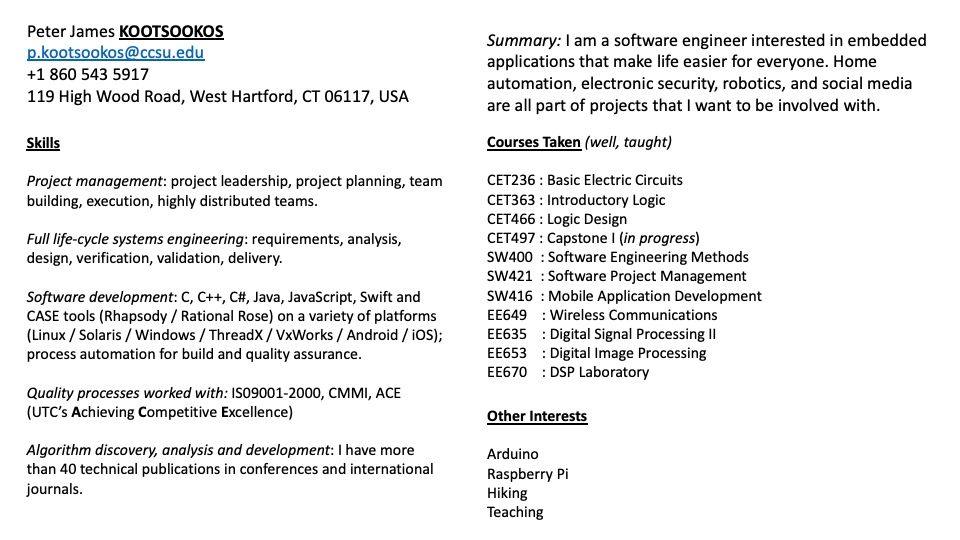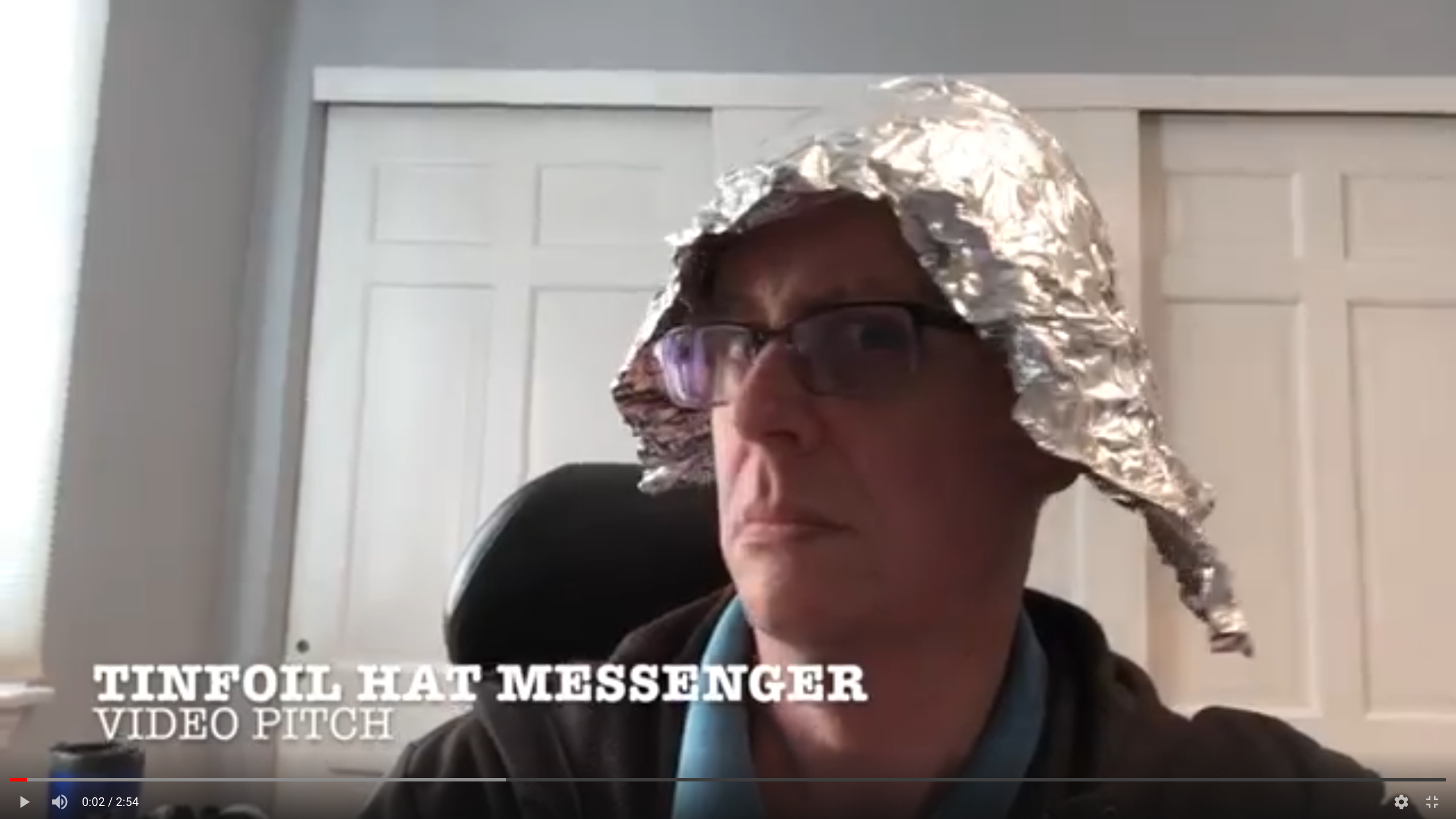Capstone projects
Published:
Capstone projects are a project that senior students (final year students) take on to showcase the skills they’ve learnt in their degree. Sometimes this is called Senior Design Project.
At Central Connecticut State University (CCSU), the capstone subject for Computer Engineering Technology (CET) students is CET497. I’m teaching this course this semester; another adjunct, Jonathan Braverman of Stanley teaches the version of CET497 that starts in the Fall semester.
Ideation
Many universities use capstone projects as mini research assistant jobs to further some aspect of the research of their faculty. This is an easy way to generate ideas for projects, because every year new projects are needed for the next cohort of students. Every semester if the course is offered to start in both Fall and Spring semesters.
CCSU doesn’t take that approach. Sure, we like the students to do stuff we are interested in. But I’d prefer to have the students do stuff they are interested in.
The first five or six weeks of my capstone course starts with ideation: idea generation.
Who am I?
We start with the students presenting themselves and their backgrounds and interests using a functional resume. Because this needs to be shown to the whole class, I get them to use a PowerPoint template like the one below.

This gets the students to know one another better. Mostly they do already, but sometimes there are intermingling of different cohorts, so introductions are good.
My own idea
The next step is for students to get the students to propose their own idea using a template similar to the User Story template.
The template I (see caveat below) use is:
I am studying / designing [SOMETHING]
because I want to provide / find out what/why/how [SOMETHING]
in order to help my reader / customer understand or improve [SOMETHING]
This ends up being a single sentence capturing an idea. Then, we work on fleshing the idea out.
A video pitch
We spend some time in class going through each of the above ideas, and thinking about the different [SOMETHING]s in the above.
Then I get the students to generate a video pitch of a maximum of three minutes.
The video must contain:
- An expression of the problem, need, or opportunity.
- An explanation of the idea to address it.
- Who the target audience is.
- How you came up with the idea.
- What the next steps are.
A couple of years ago, I did the example below.
More to be said
This is how I start the course. There are a few more steps before we form teams and decide on which projects go forward. I’ll write about those at a later time.
All this is pretty much stolen
I’ve stolen all of these ideas from Prof. David Broderick, my CCSU colleague. He’s written up the details of how to do this here.

